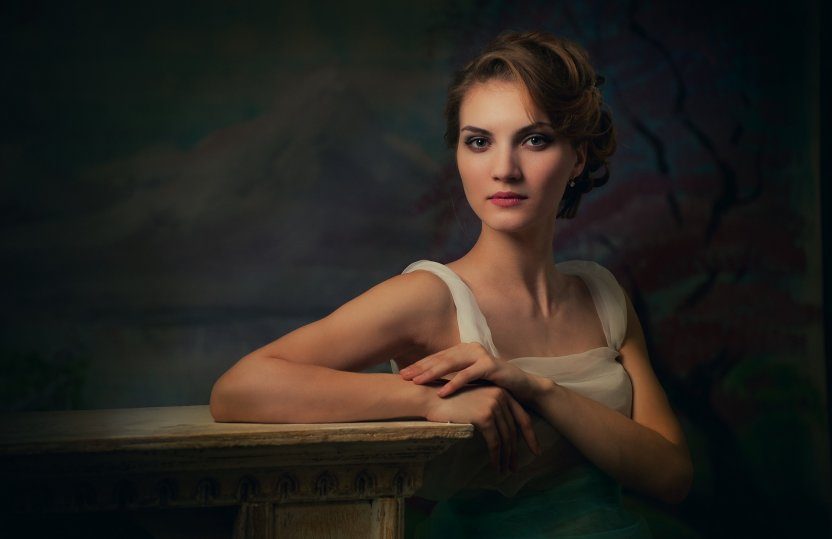
en
arrival
11
Apr 2025
departure
12
Apr 2025
buy voucher

When the wild area of Masuria was overgrown by the boundless forests of Galindzka Forest and Masuria lakes were inhabited by large numbers of fish, on the beautiful hill between the lakes Ołów and Rynskie, there was the building of a castle started.
This medieval fortress was erected in stages and once it looked completely different.
The oldest information about the Teutonic castle, which gave rise to the settlement and the later town, is derived from the chronicle of Wigand of Marburg in 1377. The first phase of construction indicates the year from the second decade of the 14thcentury to 1376. The second construction phase began in 1377, with the founding of the outer walls of the castle, on the plan of the rectangle measuring 44x52 meters , with a powerful forecastle.
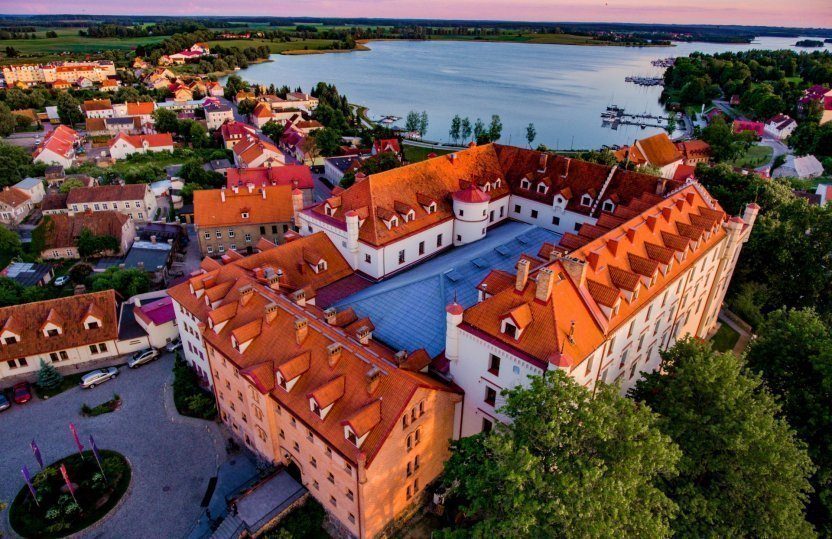
South and north wing was 56.5 m and 44.8 east and west with the inner width of 17 meters. The walls 4.5 meters thick, widening down to 2.5 m, formed the basis of this colossus. The other sides of the square were closed with curtain walls, with an unusual square tower sat in the western corner. It is assumed that then the perimeter walls did not exceed the second storey and the south-eastern wing was constructed from the ground floor. In addition, the perimeter walls were reinforced at the corners with projections in order to embed turrets on their crown. The rooms on the ground floor were planned to be covered with wooden ceiling and the others were to be with cross vaults.
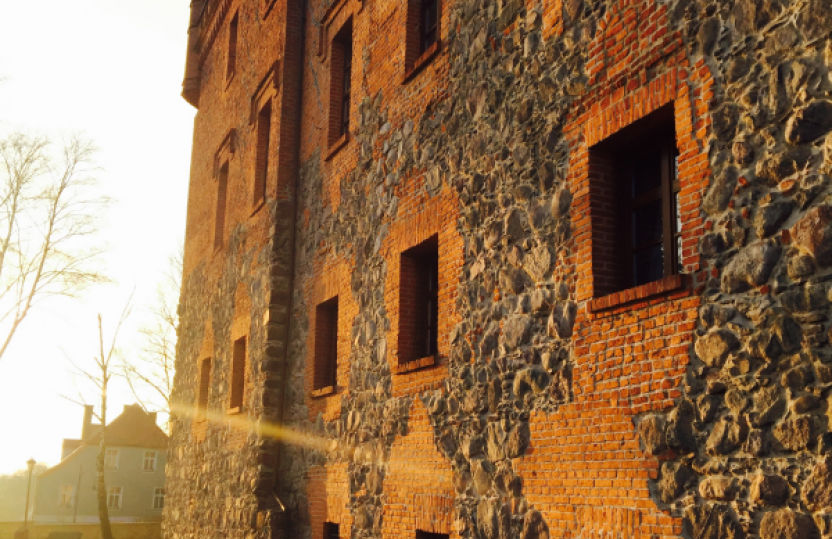
Once the Commandery was set in Ryn, there appeared the need to rebuild. Then, the basements, the south-eastern wing, got a new division with newly constructed cross vaults. The basement got three new rooms, including a spacious hall, covered with a cross vault and supported on brick pillars. On the first floor there constructed a chapel, which stood out in the facade with distinctive windows. Next to it, there was the commander’s chamber and housing. Over the chapel there was the armoury.
The last, highest storey was surrounded by defense porches. On the first floor to the upper floors led the staircase of the thickness of the wall, and communication in the wing was assured by a storey cloister. The castle from the south-east adjoined a ward, which housed the farm. That was probably the economic base of the whole premise. The castle was surrounded by a moat irrigated with water from lake Ołów.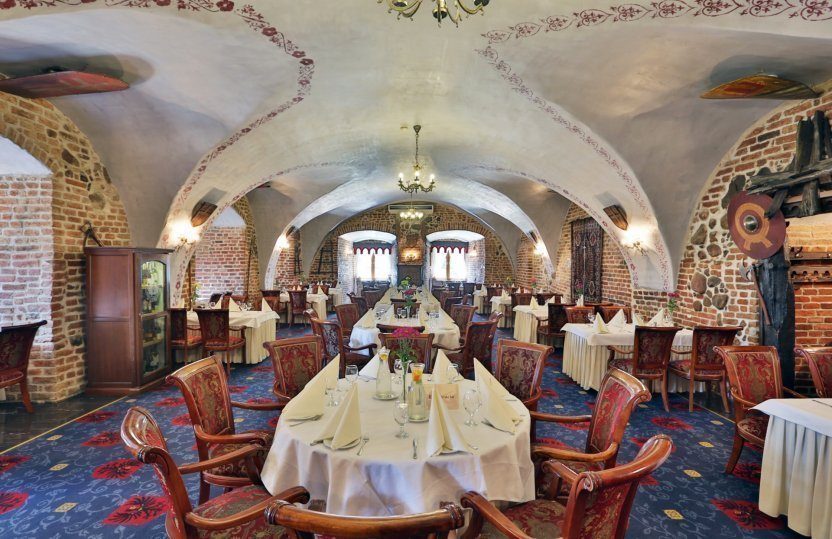
In the inventories from the beginning of the 15thcentury, we find that the rooms of the castle had a kitchen, a bakery and even the brewery. In 1507 it is mentioned an attic, a chapel, a powder magazine and an armoury. In the years 1515-1524 there are listed a chapter house, a refectory, a dormitory, writer’s and cook’s chambers, a bath and a living room.
From the successive censuses we can learn about the existence of the malt, a basement, a storage of honey, a flour mill as well as a powder, granary and a fulling mill. The 18thcentury, four-irregular lump castle with extended patio- was a result of numerous reconstructions of the 16thcentury and later.
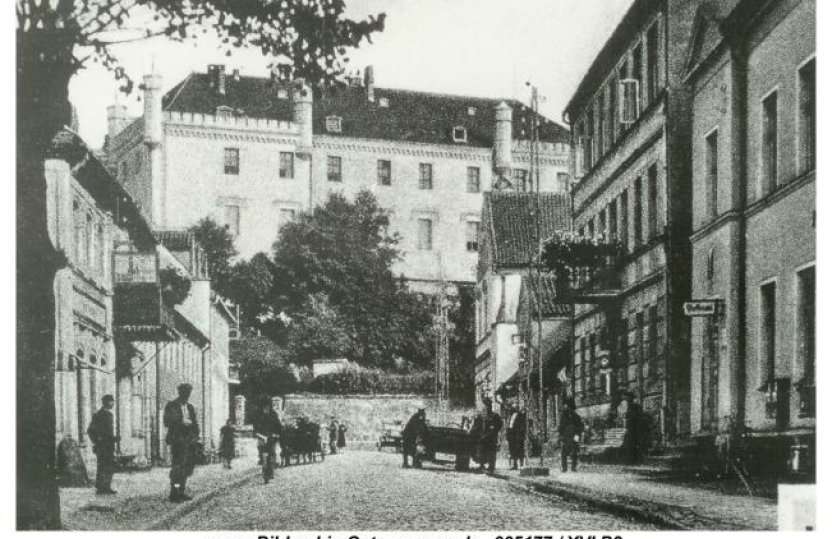
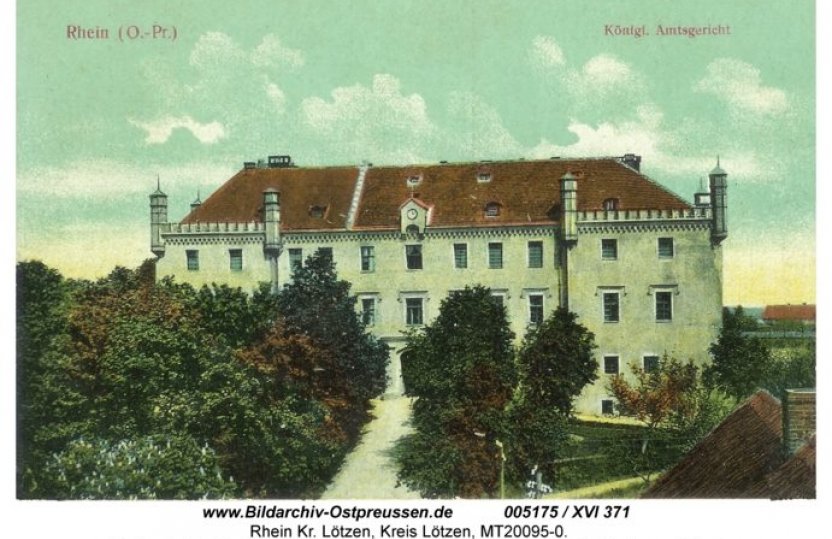
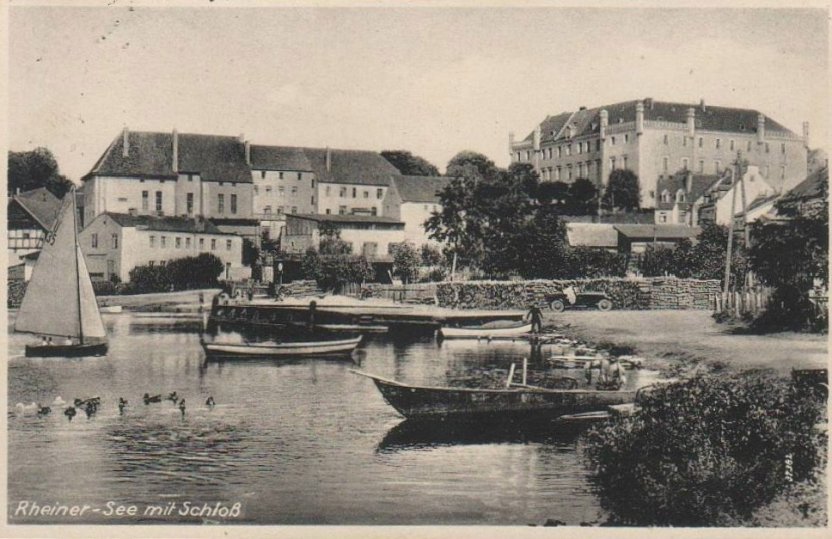
According to the legend, the castle in Ryn is haunted by good luck spirit White Lady. It’s allegedly Anna – the wife of Lithuanian Grand Duke Vitold, who aimed, through the alliance with the Teutonic Order– was to gain the Crown of Lithuania.
For this reason, many times he visited the castle in Ryn to establish the principle of alliance, and just before the battle of Grunwald, commitment to transition towards the Knights, which was guaranteed by the presence of his wife Duchess Anna and the children. As history has shown, Vitold did not betray Jagiello, so for a revenge his family were walled in the castle cellars. Since that time, when the night falls, in the moonlight, a white ghost of a lady walks in the chambers.